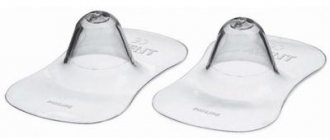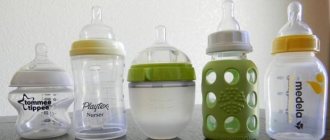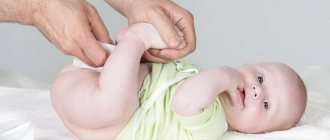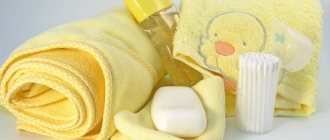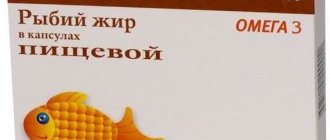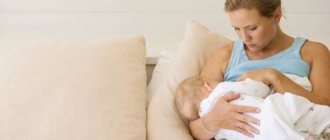With the onset of puberty, girls, under the influence of sex hormones, begin to grow breasts. But no one thinks about caring for her. Although everyone remembers about facial skin care, for example. The need for this increases with the onset of pregnancy. The mammary glands and nipples become sensitive. During pregnancy, a woman experiences discomfort. And after childbirth, there is an additional impact on the nipples - feeding the newborn. Then the woman begins to pay more attention to the required breast skin care. With the arrival of milk, the breasts swell and harden greatly, and the soreness of the mammary glands increases. Cracks may also appear on the nipples, and therefore expressing milk and feeding your baby turns into torture. It is especially difficult for women with flat and inverted nipples who have not received due attention. They experience difficulty feeding the baby and expressing milk, which continues to come. As a result, milk stagnates, causing lactostasis, and then mastitis. The initial stages of mastitis are treated with antibiotics, and more severe cases with surgery. To avoid such problems, a woman needs to follow simple rules for caring for her mammary glands.
Breast examination
In order to prevent serious problems associated with diseases of the mammary glands, starting from the age of 20, women need to visit a mammologist once every two years, and after 40 – once a year. The doctor will order a mammogram - an x-ray of the mammary glands. This will help to promptly identify possible pathologies in the early stages.
Self-breast examination
It is possible to independently examine the breast using palpation (palpation). Standing in front of a mirror, examine your breasts for the presence of formations, the color of the areolas and nipples, and symmetry. This is done in two positions:
- The arms are lowered along the body, relaxed;
- Hands raised up.
Afterwards, the mammary glands are palpated. You need to feel the breast in a circle from the periphery to the center (nipple). Having reached the nipple, press on it and see if there is any discharge. Finally, palpate the armpit area to identify inflamed lymph nodes. Such self-examination should be carried out at least once a month. If you notice lumps, changes in color, or discharge from the nipples, you should consult a doctor. There are also examination methods such as ultrasound (ultrasound) and examination of breast cells using puncture. But these examination methods are carried out only according to the doctor’s indications. Preparing the mammary glands for feeding should be carried out during pregnancy. Particular attention should be paid to such procedures for owners of inverted and flat nipples.
Expert commentary
Why nipple injuries occur
The most common cause of nipple injuries and cracks is improper attachment. Let's look at the most common myths related to the prevention and prevention of cracks.
Myths about nipple care
- rubbing and hardening the breast during pregnancy will help avoid nipple cracks
- wash your breasts before and after each feeding
- wipe before feeding with alcohol tinctures, brilliant green or other disinfectant solutions
- be sure to lubricate the nipples after each feeding with creams, Vaseline or ointments
If we follow all these tips, then the only thing we will get is a tired mother who does nothing but wash and lubricate her breasts.
Why is frequent washing and treatment of breasts with disinfectants not only not beneficial, but can even be harmful?
The skin on the breast is quite delicate and sensitive, so frequent use of soap can lead to dryness and irritation of the nipple and areola. Each woman has her own microbiome on the surface of the skin, which is important for the child, and it should not be disturbed by frequent washing.
How to properly care for your breasts during breastfeeding?
- wash your breasts along with your whole body 1-2 times a day in the shower
- lubricate the areola and nipple that enter the baby's mouth with your own breast milk or lanolin-based cream (no other cosmetic components are safe and should not come into contact with the baby)
- after feeding, at the woman's request, do air baths for the breasts
- wear comfortable underwear in your own size made from natural fabrics
- when using lactation inserts, change them often and on time, if possible, use reusable ones made from natural fabrics
What is the most effective skincare procedure?
The most effective nipple care is effective, correct attachment of the baby to the breast. If you have pain, cracks, discomfort or other situations that bother you during feeding, you should consult a doctor or breastfeeding consultant.
Your pediatrician
Yulia Petruchek
Breast care - basic rules
Proper nutrition and drinking regime will help keep your breasts beautiful and firm. At the end of the day, after regular water procedures, have a contrast shower. It will tone not only the skin of the chest, but the entire body. The main thing is to increase the difference between hot and cool water gradually. You should not wash your breasts 10 times a day. One is enough - at the end of the day. But you shouldn’t wash your breasts with soap, it’s better to just rinse with water, as soap dries the skin, especially the area around the nipples, which is already tender.
How to care for your breasts after childbirth
After childbirth, breast hygiene is of primary importance to avoid the transfer of pathogenic bacteria from the mother’s skin through the milk to the baby. This becomes especially relevant in the case of cracks and “rubbing” on the nipples, when it is necessary to prevent the development of mastitis.
- Mandatory hand washing before any manipulation of the breast
- Daily warm shower using a mild hypoallergenic gel or soap. There is no need to wash your breasts too often, this can cause dry skin and wash away the protective bactericidal film of fats in the areola area.
- Regularly and frequently change absorbent breast pads, especially if your milk is leaking heavily.
- If there are no visible damage to the skin, then there is no need to apply additional local products.
- It is necessary to be extremely careful about any cosmetics applied to the breast, because some of them will inevitably reach the baby when sucking milk
- To moisturize the area around the nipple after feeding, you can lubricate the skin with a small amount of breast milk. The fats it contains will protect the code from drying out and have an antiseptic effect.
- If your nipples are sore, especially at first, to reduce sensitivity, after feeding you can apply ointments with lanolin (Purelan 100 from Medela, Gold Cream Ardo, Nipple Care Cream from Pigeon, nipple creams from Sanosan and Mothercare and others). Lanolin is safe for children and does not require rinsing. After 1-2 months of using lanolin, the need for it usually goes away.
How to choose a bra
Already during pregnancy, breast size begins to grow, and you need to choose the right bra size, since the old one may no longer fit. It will compress and impede blood flow in the mammary glands. A correctly selected bra size will help avoid discomfort, unwanted stretch marks, and also relieve increasing stress from the spine. When choosing underwear, the main thing is to pay attention to its material. It is better to choose a bra made from natural materials, without wires, with wide straps and multi-level clasps. There are also bras in which the cups are attached with rivets, which is very convenient after childbirth during feeding.
Breast hygiene
After childbirth, women's breasts swell greatly from the flow of milk. They need support. It is important to choose a quality bra. It should be comfortable, elastic, made of natural fabric, without underwires, with wide straps. Such a bra will help avoid stretch marks, protect the breasts from injury, ensure optimal blood circulation and milk flow, and remove excess stress from the spine. It is advisable to have several bras (at least two) to change them daily. If milk leaks from your breasts, you can put special pads in your bra cups or make them yourself from 8 to 10 layers of sterile bandage.
Daily breast massage and taking a contrast shower will help improve blood circulation in the mammary glands and avoid stretch marks. Massage your breasts with water jets in a clockwise motion with warm and cool water alternately. After taking a shower, wipe your breasts with a towel using movements from the nipple to the armpit. Wear special supportive tops at night.
To keep your mammary glands in shape, do special exercises to strengthen your breasts. Here are some exercises. Repeat each at least 20 times.
- Clasp your hands in front of your chest, palms facing each other, as if in supplication. Squeeze your palms tightly for a few seconds, then release.
- Stand up straight, place your hands on your waist. As you rise onto your toes, move your elbows back as far as possible.
- Take an expander or a tight, wide elastic band about 50 cm long. Raise your arms above your head, stretch the elastic band, and hold it taut for ten seconds.
- Push-ups (from the floor or a chair) also help strengthen the muscles that support the chest.
Take a look at our section “After childbirth (for mom)” where you will find
Breast massage
It is better to do it every day for 5-10 minutes. Using light and smooth movements, massage your breasts from bottom to top and in a circle. It is worth trying cryomassage - this is rubbing the mammary glands with ice cubes made from chamomile or sage infusion. During the massage, it is possible to use special creams or oils, so the skin will be more elastic, which reduces the risk of stretch marks. For flat and inverted nipples, the massage includes stretching the nipples with light scrolling. This must be done carefully and gradually. The main thing is not to overdo it, otherwise cracks will appear before birth.
How to care for your breasts
Basic hygiene and use of cosmetics
Comfortable and enjoyable breastfeeding can only be achieved with proper and timely breast care. And of course, every young mother would like to keep her breasts healthy, young and firm even after lactation ends.
It is necessary to prepare the breasts even before birth, starting from about 7 months of pregnancy. This preparation will make it easier to adapt to the arrival of milk and allow the mother to feel more confident.
What to do before giving birth
Wearing special underwear
Already in the later stages of pregnancy, the breasts increase significantly, which can cause both their sagging in the future and increased stress on the spine. Therefore, wearing a special bra will be very useful - wide straps, a large capacious cup, no underwire, natural breathable material will allow the breasts to feel comfortable and remain firm. By the way, you should definitely take off your underwear at night.
Preparing nipples for feeding
It is especially useful for women with small, inverted and sensitive nipples. Every day in the shower, do a soft massage with a moderately hard washcloth using gentle stroking movements; this will slightly “roughen” the nipples and make breastfeeding less painful at first. You can also slightly pull your nipples forward and take daily air baths in cool air
Caring for the mammary glands during breastfeeding.
The rules for breast care during breastfeeding remain the same as during pregnancy. But a couple more rules are also added to them:
- You should not wash your breasts before every feeding. This will cause cracks in the nipples.
- When feeding, you need to ensure that the baby grasps not only the nipple, but also the areola. In women with large areolas, this may not be the entire nipple area, but at least part of it.
- Women with flat or inverted nipples are advised to use special breast shields when breastfeeding. This will help eliminate possible difficulties during feeding.
- After finishing feeding, it is advisable to leave the breast bare while the baby is held upright. This allows the breasts to breathe, and due to the contact of the mother’s body with the baby’s body, it will promote heat exchange. This will help the baby’s digestion and also relieve him of possible colic.
- If the baby has eaten enough and there is still milk left in the breast, then you need to express it. For this it is better to use a breast pump. It is especially suitable for women with flat and inverted nipples.
Lingerie and accessories
Lingerie should also be special; bras for nursing mothers are best. These bras differ from regular ones in their cut: they provide good support for enlarged breasts during breastfeeding thanks to wide straps and special valves. The part of the bra that comes into contact with the nipple and areola should be made of cotton, the seams should be flat and in no case pass through the nipple line. Such bras do not have underwires, because the underwires often pinch the milk ducts and put pressure on the breasts - as a result, stagnation of milk and inflammation in the mammary glands are possible. Wearing the right bra helps your breasts, and especially your nipples, adapt to their new condition and size. You can also use special inserts in your bra - they absorb the milk released between feedings, which is also very important from a hygiene point of view, since the inserts leave the skin dry and clean, protecting the nipples from irritation. If cracks in the nipples do appear, then in order to allow the skin to recover and protect it during feeding, you can use special nipple shields. They are made of thin, tasteless and odorless silicone, which, on the one hand, protects the breast, and on the other, does not interfere with the baby’s ability to latch onto the nipple correctly. When choosing a nipple cream, pay attention to its composition and indications for use: some creams are suitable for preventing damage and dry skin, while others are better at combating existing problems. The most convenient creams are those that do not need to be washed off before feeding.
